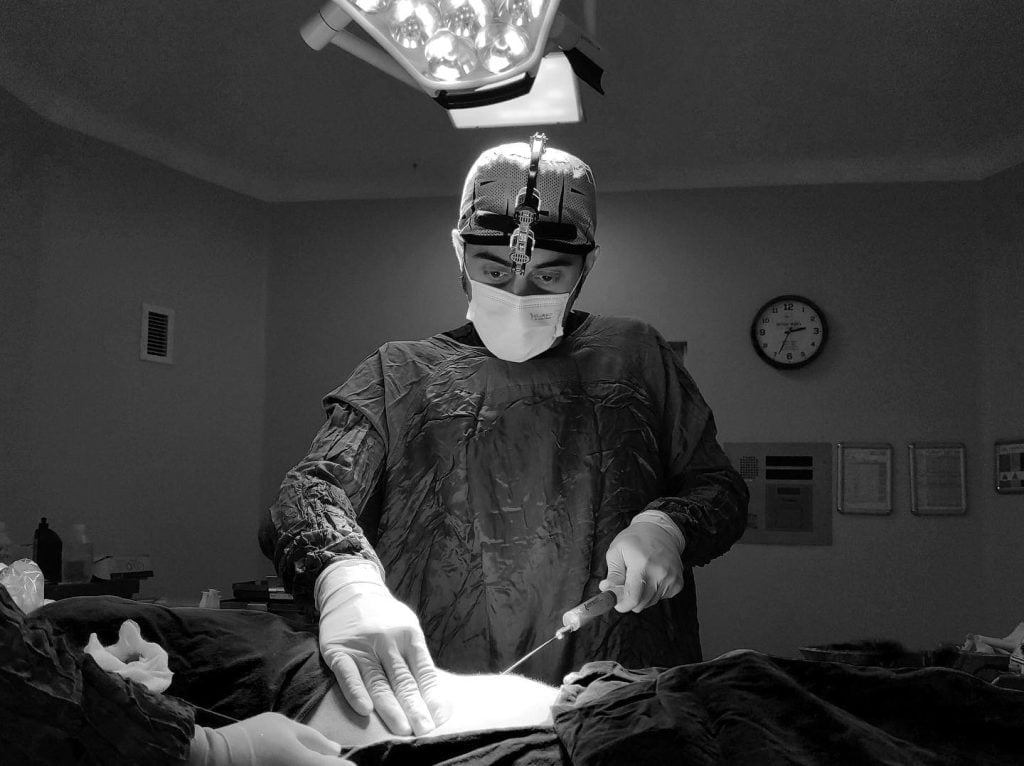Considering Facial Feminization Surgery (FFS) naturally brings up many questions. It’s a significant decision, and having your queries answered clearly and comprehensively is crucial for feeling informed and confident. This Frequently Asked Questions about FFS Surgery (FAQ) section addresses common concerns and inquiries from individuals exploring facial feminization. We aim to provide clear, concise answers to help you navigate your FFS journey with greater understanding and peace of mind.

General FFS & Candidacy
Q1: What exactly is Facial Feminization Surgery (FFS)?
A: Facial Feminization Surgery (FFS) is a collection of surgical procedures designed to modify facial features to appear more typically feminine. It involves reshaping bone and soft tissues of the face to reduce masculine traits and enhance feminine characteristics. FFS is a highly individualized surgery, tailored to each person’s unique facial structure and feminization goals.
Q2: Who is FFS for? Is it only for transgender women?
A: While FFS is most commonly sought by transgender women to align their facial appearance with their gender identity, it is not exclusively for transgender women. Cisgender women may also consider certain FFS procedures to soften masculine features or enhance feminine aesthetics. FFS is for anyone who desires a more feminine facial appearance and whose facial features can be feminized through surgical means. Candidacy is determined on an individual basis after consultation with a qualified FFS surgeon.
Q3: At what age is it appropriate to consider FFS?
A: There isn’t a strict age limit, but generally, FFS is considered for adults who have completed facial skeletal growth. This typically occurs by late teens or early twenties. For transgender individuals, it’s often recommended to have been living as their affirmed gender for a period and ideally be on hormone replacement therapy (HRT) for some time before considering FFS, as HRT itself can influence facial soft tissues. The best age is when you are emotionally mature, have realistic expectations, and are physically and mentally prepared for surgery.

FFS Procedures & Expected Outcomes
Q4: What are the common procedures involved in FFS?
A: FFS encompasses a range of procedures that can address different facial areas. Common procedures include:
- Forehead Contouring (Brow Bone Reduction, Foreheadplasty): Reshaping the brow bone and forehead to reduce masculine bossing and create a smoother, more feminine contour.
- Brow Lift: Elevating the eyebrows to a more feminine arch and position.
- Rhinoplasty (Nose Feminization): Reshaping the nose to be more refined, delicate, and feminine in proportion to the face.
- Cheek Augmentation: Enhancing cheek volume and projection for a softer, more feminine cheek contour.
- Chin Contouring (Genioplasty): Reshaping the chin to be less wide and projecting, creating a more delicate and feminine chin shape.
- Jaw Contouring (Jaw Reduction): Reducing the width and prominence of the jawline for a softer, more ovular, and feminine jaw shape.
- Tracheal Shave (Laryngoplasty): Reducing the size of the Adam’s apple.
- Lip Lift and Augmentation: Enhancing lip shape and fullness for a more feminine pout.
- Hairline Advancement/Correction: Lowering and feminizing a high or masculine hairline.
Q5: Which FFS procedures will I need?
A: The specific procedures you need will be determined during a personalized consultation with an FFS surgeon. They will assess your facial features, discuss your feminization goals, and recommend a customized surgical plan tailored to your unique facial anatomy and desired outcome. Not everyone needs all procedures, and the choice is highly individualized.
Q6: What kind of results can I realistically expect from FFS? Will I look completely different?
A: FFS aims to create a naturally more feminine facial appearance. The goal is typically subtle yet impactful changes that harmonize facial features and create an overall feminine aesthetic, rather than a dramatic or “operated-on” look. Results vary based on individual anatomy, procedures performed, and healing. FFS can significantly soften masculine features, enhance feminine contours, and improve gender congruence. However, it’s crucial to have realistic expectations. FFS can achieve remarkable feminization, but it won’t make you look like a completely different person or a specific celebrity. The focus is on achieving your most feminine and natural-looking potential.

FFS Recovery & Scarring
Q7: What is the recovery process like after FFS? How much pain is involved?
A: FFS recovery is a gradual process that takes time and patience. Immediately after surgery, you can expect swelling, bruising, and some discomfort. Pain is typically manageable with prescribed pain medication. Swelling is usually most pronounced in the first few days and gradually subsides over several weeks, with final swelling resolution taking several months. Initial recovery downtime (major visible swelling/bruising) is typically 2-3 weeks, but it can vary. You’ll need to follow specific post-operative care instructions diligently. Most patients can return to light activities within a couple of weeks and to more normal routines within a month, depending on the procedures performed and individual healing.
Q8: Will I have visible scars after FFS? Where are the incisions usually placed?
A: Incisions are necessary for FFS, and therefore some scarring is unavoidable. However, skilled FFS surgeons utilize techniques to minimize scarring and strategically place incisions in discreet locations to make them as inconspicuous as possible. Common incision locations include:
- Hairline (Coronal Incision): For forehead contouring – scar typically well-concealed within the hairline as hair regrows.
- Upper Eyelid Creases: For brow lifts or upper blepharoplasty – scars hidden within natural eyelid folds.
- Inside the Mouth (Intraoral Incisions): For chin and jaw contouring – no visible external scars.
- Pre-tragal Crease (in front of the ear): For temporal brow lifts or facelifting components – often heals very discreetly.
- Scalp (for Endoscopic Brow Lift): Very small incisions, minimal scarring.
- Neck Crease (Tracheal Shave): Scar usually small and placed in a natural neck crease.
Scar management protocols (silicone, massage, sun protection) are crucial post-operatively to optimize scar healing and minimize visibility. Most FFS scars, with proper care, fade significantly over time and become very subtle or barely noticeable for many patients.

FFS Costs & Financials
Q9: How much does FFS surgery typically cost?
A: The cost of FFS is highly variable and depends on several factors:
- The specific procedures performed: More extensive surgery with multiple procedures will naturally cost more.
- Surgeon’s fees: Surgeon fees vary based on their experience, reputation, and geographic location.
- Facility fees (hospital or surgical center): Facility costs depend on the location and type of facility.
- Anesthesia fees: Anesthesiologist fees are typically separate.
- Geographic location: Costs vary significantly between countries and regions.
FFS costs can range significantly, from several thousand dollars for a limited number of procedures to upwards of $20,000 – $50,000+ for more comprehensive FFS involving multiple complex procedures. It’s essential to get detailed, itemized quotes from surgeons to understand the full cost breakdown.
Q10: Is FFS surgery covered by health insurance?
A: Insurance coverage for FFS varies greatly depending on your insurance plan, location, and the specific procedures. In some regions or with certain insurance providers, some components of FFS that are deemed “medically necessary” (e.g., tracheal shave for dysphonia, potentially forehead contouring if related to chronic headaches – very specific and often difficult to prove) might have partial coverage. However, most often, FFS is considered cosmetic surgery by insurance companies and is not covered. It’s crucial to check with your insurance provider directly to understand your specific coverage details and any requirements for pre-authorization or medical necessity documentation. Many patients finance FFS out-of-pocket.

Choosing an FFS Surgeon & Safety
Q11: How do I choose a good and trustworthy FFS surgeon? What qualifications are important?
A: Choosing a surgeon is paramount. Look for these key qualities:
- Board Certification: Verify board certification in Plastic Surgery or Oral & Maxillofacial Surgery from reputable boards (e.g., FRACS, FRACDS(OMS) in Australia).
- Specialized FFS Training and Experience: Surgeons with focused training and extensive experience in FFS procedures are preferable. Inquire about their specific FFS training and case volume.
- Proven Results & Before/After Photos: Review their before-and-after photo portfolio to assess their aesthetic style and results.
- Ethical Practice & Transparency: Choose a surgeon who prioritizes informed consent, provides realistic expectations, and is transparent about risks and costs.
- Positive Patient Reviews & Reputation: Research patient reviews and testimonials (across multiple sources, but with caution) to gauge patient experiences.
- Good Communication & Rapport: Choose a surgeon with whom you feel comfortable communicating openly and who listens to your goals and concerns.
- Accredited Surgical Facility: Ensure surgery is performed in an accredited hospital or surgical center with high safety standards.
Q12: Is FFS surgery safe? What are the potential risks and complications?
A: Like any surgical procedure, FFS carries potential risks and complications. However, when performed by a qualified and experienced surgeon in an accredited facility, FFS is generally considered safe. Potential risks, which are relatively uncommon but it’s important to be aware of, can include:
- Infection
- Bleeding/Hematoma
- Nerve injury (temporary or, rarely, persistent numbness, weakness)
- Scarring (though minimized with techniques and care)
- Asymmetry
- Unsatisfactory aesthetic outcome/need for revision surgery
- Anesthesia risks (rare but possible with any surgery under anesthesia)
- Swelling and bruising (normal and temporary, but can be extensive initially)
- Hair loss around coronal incision (temporary or sometimes persistent with coronal incision)
- Rare risks: DVT/Pulmonary Embolism (blood clots), seroma, contour irregularities, etc.
Choosing a highly skilled surgeon, being in good health, and strictly following pre and post-operative instructions significantly minimizes risks. During consultations, a trustworthy surgeon will thoroughly discuss potential risks and complications relevant to your specific surgical plan.
Long-Term Results & Consultations
Q13: How long do the results of FFS surgery last? Are they permanent?
A: The bony reshaping procedures in FFS (forehead contouring, jaw/chin contouring) provide permanent changes to the underlying bone structure. Soft tissue procedures (brow lift, rhinoplasty, lip lift/augmentation) are also generally long-lasting, although natural aging processes will continue to affect facial tissues over time in everyone, regardless of surgery. Maintaining a stable weight and healthy lifestyle can help preserve your FFS results long-term. Revision surgery may be considered in the future for minor refinements or to address age-related changes, but the core feminizing effects of FFS are generally considered permanent.
Q14: What happens during an FFS consultation? What should I expect?
A: An FFS consultation is an essential step. Expect the following:
- Medical History Review: The surgeon will review your medical history, current medications, and allergies.
- Discussion of Your Goals: You’ll discuss your feminization goals, desired facial changes, and specific concerns.
- Facial Examination: The surgeon will physically examine your face, assessing bone structure, soft tissues, and facial features.
- Procedure Recommendations: Based on your anatomy and goals, the surgeon will recommend a personalized surgical plan, outlining proposed procedures.
- “Before & After” Photos Review: Surgeons often show before-and-after photos of their patients with similar procedures.
- Risks and Benefits Discussion: The surgeon will explain the potential risks, benefits, limitations, and recovery process for the recommended procedures.
- Cost and Financial Information: You’ll receive information about the estimated cost of surgery.
- Question and Answer Session: This is your opportunity to ask all your questions and ensure you have a clear understanding.
- 3D Imaging/Morphing (Optional): Some surgeons use 3D imaging or morphing software to help visualize potential outcomes (though not always perfectly predictive of final results).
Come prepared with a list of questions, be open and honest about your goals, and use the consultation to assess the surgeon’s communication style, expertise, and whether you feel comfortable and trust them with your care.
Q15: How do I schedule a consultation with an FFS surgeon?
A: To schedule a consultation, typically you would:
- Research and Identify Surgeons: Use the guidelines in previous sections to research and identify FFS surgeons who seem qualified and reputable.
- Visit Surgeon Websites: Go to the websites of surgeons you are interested in. Look for contact information or online consultation request forms.
- Contact the Surgeon’s Office: Call or email the surgeon’s office to inquire about scheduling a consultation. You may need to provide some basic information and potentially send photos for an initial assessment (often virtual consultations are offered for initial assessments, especially for international or long-distance patients).
- Inquire About Consultation Fees and Process: Ask about consultation fees, whether virtual or in-person consultations are available, and what documentation or information they require from you beforehand.
This FAQ is intended to provide general information. It’s essential to consult with a qualified and experienced FFS surgeon for personalized advice and answers specific to your individual needs and circumstances. Your FFS journey is unique, and informed decision-making is key to a positive and fulfilling experience.
Visit Dr.MFO Instagram profile to see real patient transformations! Get a glimpse of the incredible results achieved through facial feminization surgery and other procedures. The profile showcases before-and-after photos that highlight Dr. MFO’s expertise and artistic vision in creating natural-looking, beautiful outcomes.
Ready to take the next step in your journey? Schedule a free consultation with Dr. MFO ( Best Facial Feminization Surgeon for You) today. During the consultation, you can discuss your goals, ask any questions you may have, and learn more about how Dr. MFO can help you achieve your desired look. Don’t hesitate to take advantage of this free opportunity to explore your options and see if Dr. MFO is the right fit for you.









